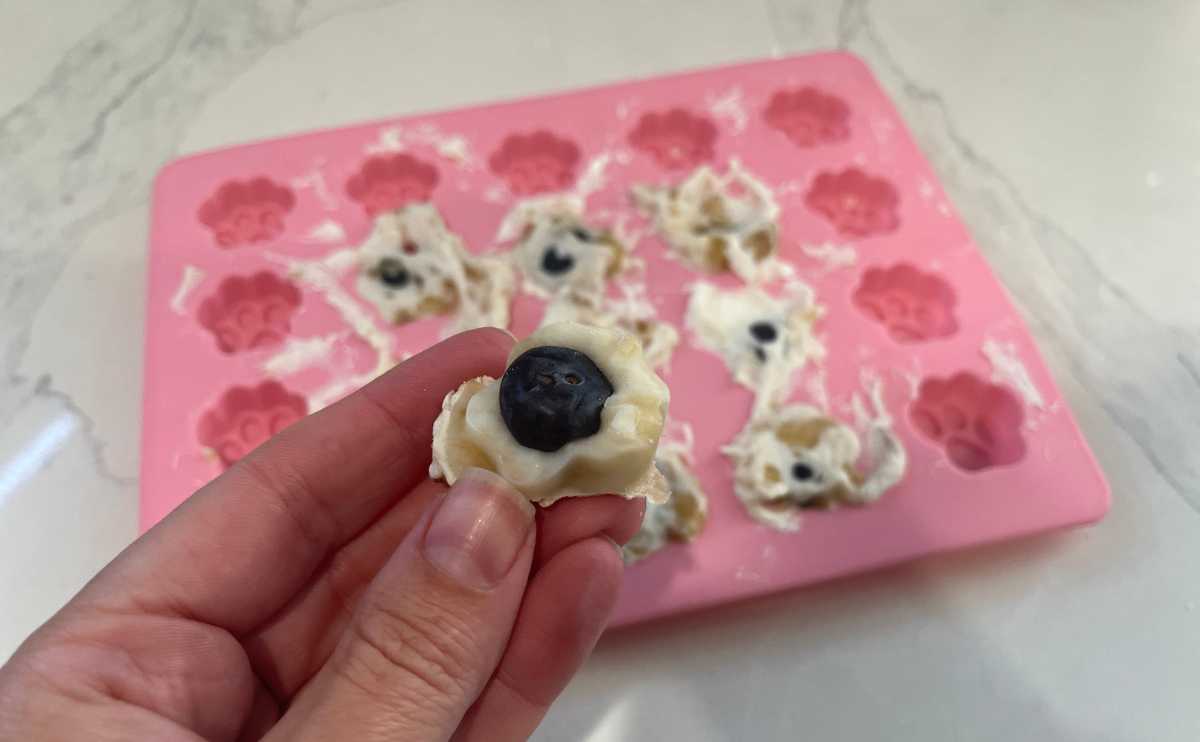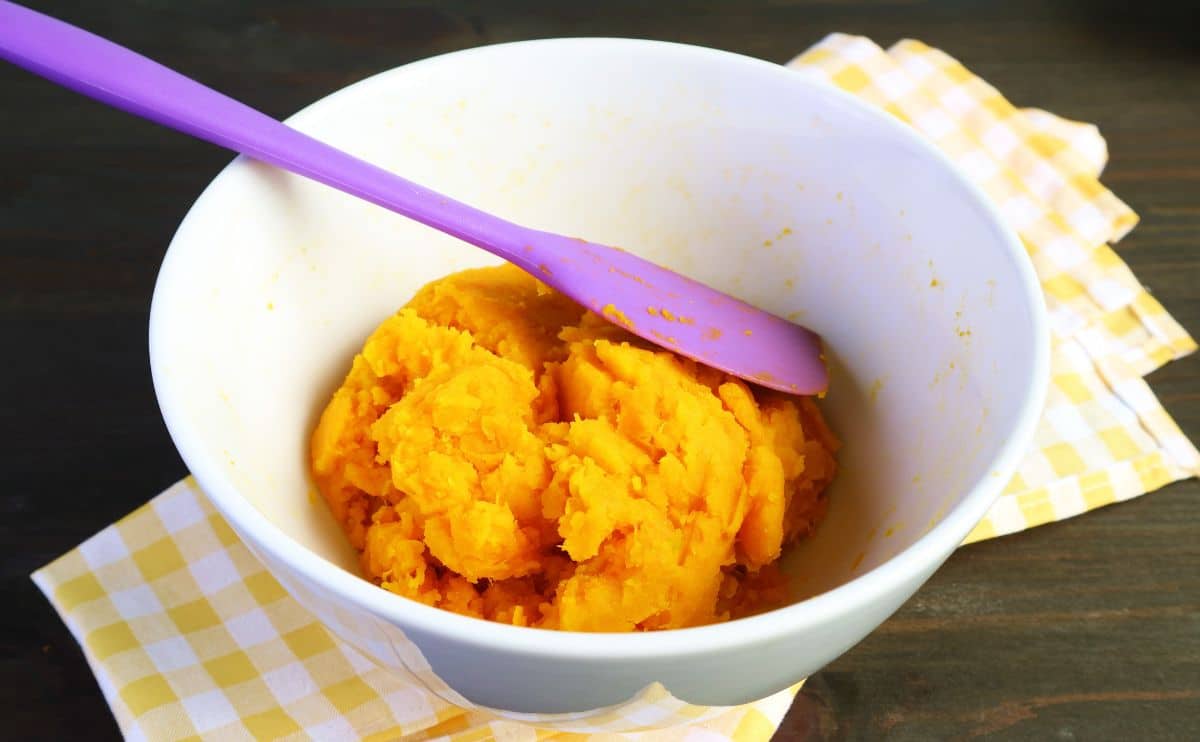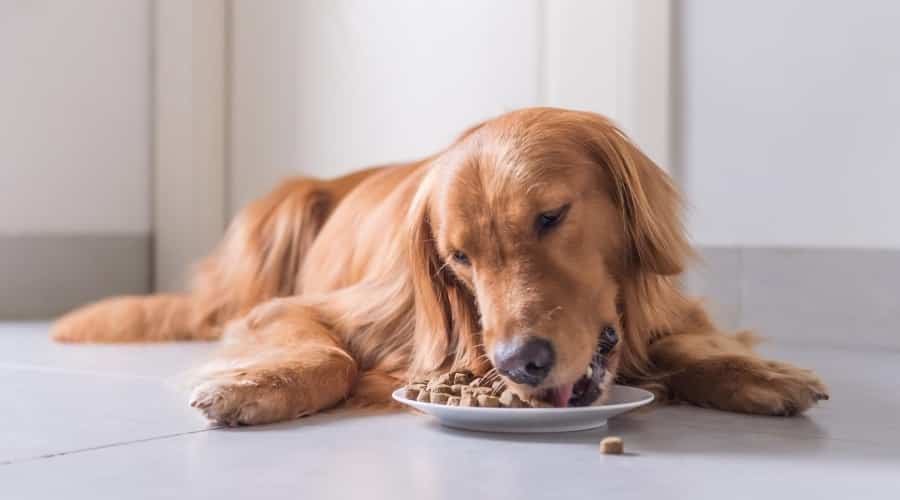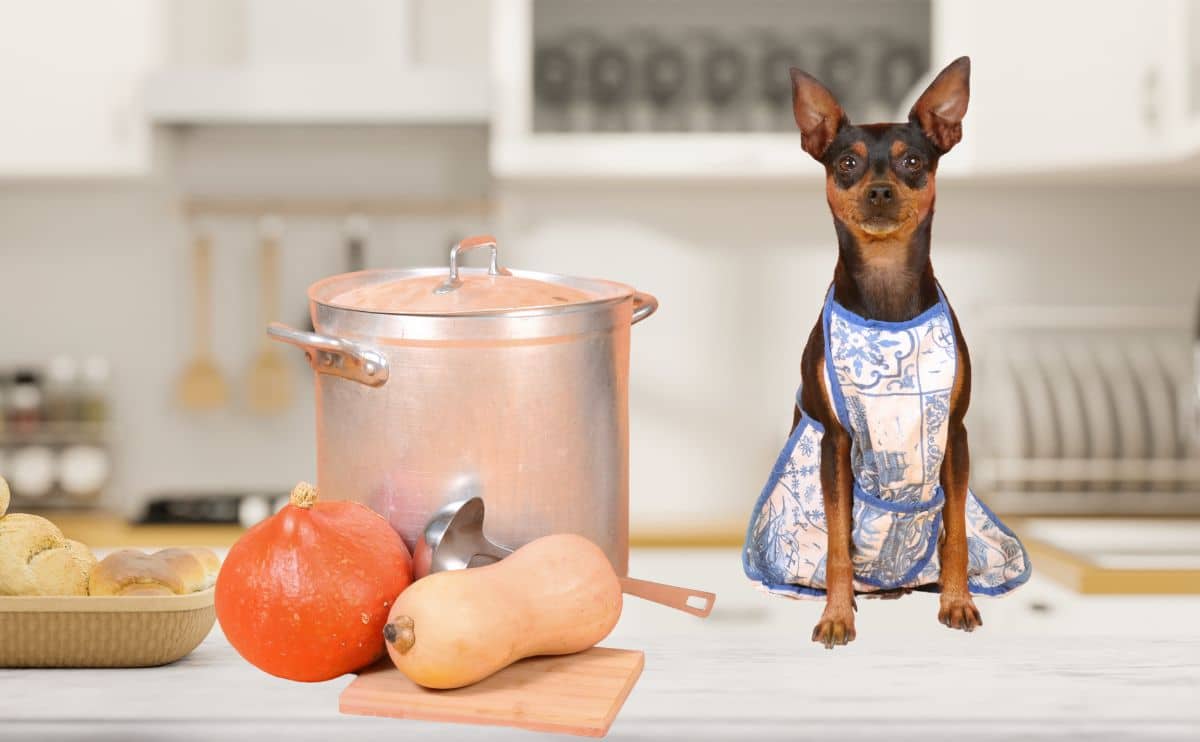Can Dogs Eat Pork Bones? Are They Safe Or Dangerous?
When you purchase through links on our site, we may earn a commission. Here’s how it works.
A nice cut of pork makes for a delicious meal. Whether you’re chowing down on pork chops or smoked ribs on the barbeque, you may find yourself with leftover pork bones at the end of your feast. As per usual, when you’re nearing the end of a meal, your dog arrives on the scene looking for scraps. But can dogs have pork bones?
Table of Contents
Before you know it, your pup gives you the most soulful puppy eyes while eyeing your leftovers and licking his lips. You don’t want all those bones to go to waste. Why not give them to the dog? They seem like a tasty treat for Fido, so why not go for it? While it might seem like a nice treat, pork bones are not a safe choice for dogs.
There are actually several reasons this isn’t a good idea. Similar to chicken bones and steak bones, pork bones are not recommended for dogs, especially if cooked. Keep reading to learn more about why you shouldn’t share these table scraps with your pup.
Raw vs. Cooked Pork Bones

Pork bones, whether raw or cooked, are not recommended for dogs. Raw bones can be used when feeding your dog a raw diet, but they should be ground up with other meats to provide your pup with the nutrients they contain. Some dog owners do allow their dogs to eat raw bones during a raw feeding session, but it’s not without risk.
It doesn’t really matter what type of bone it is, either. A grilled BBQ pork rib can cause the same amount of damage as the rib from a pork chop. What really matters is the size of the bone that was consumed and the size of your canine companion. Bigger dogs generally have bigger intestines and may be able to pass bones easier than smaller dogs. Either way, a raw bone does carry slightly fewer health risks than a cooked bone, but both should be avoided if possible.
Bone Ingestion Risks
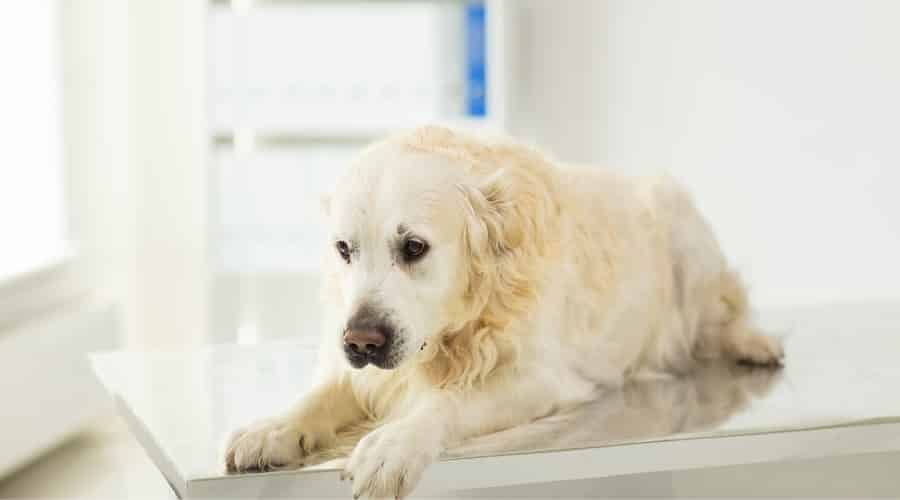
There are several risks when it comes to eating pork bones. These are just risks. This means your pup may be just fine after bone consumption. But because there are risks, it’s not worth consciously endangering your dog’s health to feed them leftovers from that afternoon’s barbeque. Let’s take a look at each risk in further detail.
Bone Splinter Damage
One of the more serious risks associated with feeding bones to your pup is that the bone can splinter in the mouth as it is being swallowed. A sharp edge on a splintered bone can easily cause a perforation in the intestine as it is being digested. This can lead to internal bleeding.
It then reveals itself through symptoms similar to when a bone that has gotten stuck in the intestine would. This means you’ll see diarrhea, changes in appetite, and abdominal pain as symptoms. It is very serious and also requires invasive surgery for treatment. With the stress that it would put on your four-legged pal, it simply isn’t worth the risk.
Bowel Obstruction
The other big risk that accompanies chewing on a pork bone is that it can cause an obstruction as it moves through the gut. Very small pieces may pass through or be broken down. But, a bone has the potential to get stuck either in the mouth or the throat even before it reaches the stomach. Excessive salivation or coughing after a dog has been chewing or playing with a bone can be a sign that there is a problem. You should seek out the help of a veterinarian immediately in this case.
Even if the bone does manage to pass to the stomach, the digestive action of the stomach and intestine is not enough to dissolve or break down a bone. There is still potential for the bone to get stuck somewhere else along the intestine. It can take up to 72 hours for symptoms of a blockage to manifest, but it is absolutely a veterinary emergency.
An obstruction in the gut can restrict blood flow to the tissue and result in serious illness or death. Signs accompanying intestinal blockages include vomiting, diarrhea, changes in appetite, or abdominal pain that doesn’t resolve within a few hours. If an obstruction is present, a veterinarian may have to operate to remove the offending foreign object. This is a very invasive surgery and is best avoided at all costs.
Dental Problems
In addition to the emergency situations involving the gut, some dogs have broken a tooth from a session with a bone. This isn’t a life-threatening situation, but it is very painful. Unfortunately, the most common solution for a fractured dog tooth is dental extraction which requires anesthesia. This is another situation that your dog would not want to find himself in.
Along with the danger to your pet, treatment for emergencies like this can get expensive. Some pet insurance policies cover emergencies such as swallowed objects. However, your pup must have a policy in place prior to the emergency.
What To Do If Your Dog Eats A Pork Bone

Don’t panic if your pup gets hold of a pork bone. You’ll need to stay calm and take action. Don’t discipline your pup right away, or they may get even more scared, forcing you to corral them when trying to take them to the vet. Minimize the distractions by keeping your composure with these steps:
Step 1: Examine Your Dog
Check your dog. Look for signs of distress, such as gagging, choking, or pawing at the mouth that might need immediate veterinary attention. Phone the vet immediately if any of these signs are present. Do not attempt to retrieve any item from your dog’s mouth or throat unless it’s clearly visible on their tongue and poses no risk during removal.
Step 2: Clean Up
Clear up any spilled trash or bits of bone to make sure that your dog and any other dogs in the house are safe. Make a note of what appears to be missing. It may be necessary to put your pup in their crate or in a room while you do this. Make sure they can’t find any more leftovers to ingest.
Step 3: Call Your Vet
Even if your pup seems fine, you should call your veterinarian for advice. Large missing bones are a big concern, but your vet will be able to give you personalized information. It’s likely they’ll ask you to monitor for signs of a problem, which may include vomiting, diarrhea, bloody stools, abdominal discomfort, and lethargy.
Step 4: Don’t Force Vomiting
Do not make your dog sick for a bone unless your vet asks you to. Inducing vomiting in dogs that have eaten a bone can cause further problems if the bone gets stuck coming back up. You don’t want to be worrying about additional health damage it may cause on the way back up, especially if the damage can be mitigated on the way back out.
Step 5: Watch For Changes
If you notice any significant changes in your dog’s behavior that last for longer than a few hours, it would be wise to book an emergency veterinary appointment. If your dog is lucky and does manage to pass a whole bone or bone splinter, you should find it in your dog’s poop around 48 hours after ingestion. Your vet may ask you to “pad” their stomach with bread, pumpkin, or other types of food used to solidify stools around the foreign item in their gut.
Additionally, to prevent this scenario from happening again, you might want to find a better way to secure your trash can. Dogs are very curious creatures. They seem always to follow their nose, especially if it leads to a treasure trove of potential tasty morsels. Access to the trash gives your dog the opportunity to sample all kinds of food items. Many of which can be very damaging to their health.
Frequently Asked Questions
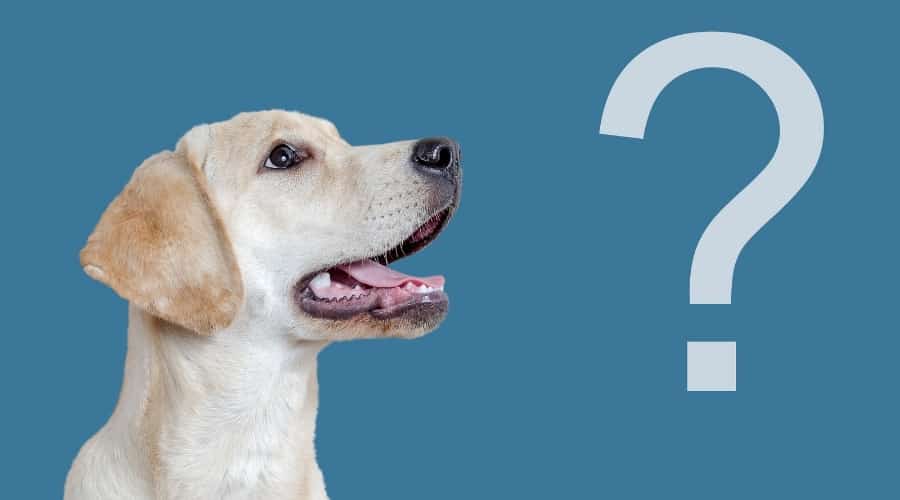
Do you still have some questions that we haven’t answered yet? We’ve listed the answers to some of the more commonly asked questions about pork bones and dogs below. If there’s something you feel we’ve missed, drop us a line in the comments section.
Are ham bones that are sold as dog treats safe?
Commercially-packaged ham bones carry the same risks as any other pork bones when given to your dog. It is best to avoid these and reduce the risk of needing any emergency veterinary trips.
Are bones a good mineral supplement for my dog?
It’s true that bones have high mineral content. But chewing on bones is neither a safe nor effective way of providing nutrients to your dog. It’s very difficult for dogs to absorb minerals from a whole bone. Minerals such as dietary calcium must also be balanced very carefully in the diet. There have been numerous documented cases of puppies who have developed limb deformities when given a calcium supplement.
Are raw pork bones okay for dogs?
It is true that raw pork bones are less prone to splintering than cooked ones. However, there is still a risk of obstruction whenever your dog is swallowing anything which is not entirely digestible. On the subject of feeding raw bones and meat to your dog, raw feeding is generally not recommended. Raw pork, in particular, can house a parasite called trichinella spiralis which is only killed through proper cooking of the meat.
This parasite exists as larvae in the muscle tissue of the pig and will mature to its adult form in the intestine of a dog after ingestion. Additionally, dogs fed raw diets can shed dangerous bacteria found on raw meats and bones. This is why raw diets are strongly discouraged in households with young children or immunocompromised individuals.
Are bones good for cleaning my dog’s teeth?
There are studies that suggest that chewing on hard treats and bones can reduce the appearance of tartar accumulation on the teeth. However, this doesn’t mean that the risk of periodontal disease will be reduced. Tartar can still linger below the gum line, an area which bone will not be able to reach.
Treats and chews that are specifically manufactured to improve dental can be a benefit to your pup. However, the best way to keep your dog’s mouth clean is by brushing on a regular basis. You can also use other DIY methods, though, some of which are very easy to do.
My dog really loves chewing on pork bones. What can I give him instead?
There are many safer alternatives than pork bones when looking for a good chew toy. These toys will either be sturdy enough to hold up after a long chewing session or crumble into small pieces that are readily digested when swallowed. Some of these are even flavored with pork or contain pork as an ingredient. Even those diehard pork-loving dogs won’t be missing out too much. Keep in mind that you should supervise your dog during playtime and replace any toys showing any signs of wear.
Are you still looking to make good use of your table leftovers? Consider making a tasty bone broth for your dog out of pork bones. You can do this by simmering them in a pot of water for up to 24 hours. Some people use bone broth to make dog popsicles, often called “pupsicles”. You can make your own by filling an ice cube tray with bone broth and dog-safe fruits and vegetables. Peas, carrots, honeydew, and watermelons are good candidates.
Final Thoughts
Pork bones are not a safe snack or treat for dogs. Keep those leftovers safely away from your pup. As difficult as it might be to resist those puppy eyes, you’ll need to do it for the health of your pup. It’s recommended that dogs are not given any bones from the table because of the potential risks involved. With the many alternative options available, there’s bound to be something that will satisfy even the most discerning pork bone enthusiast without the surprise trips to the vet.
